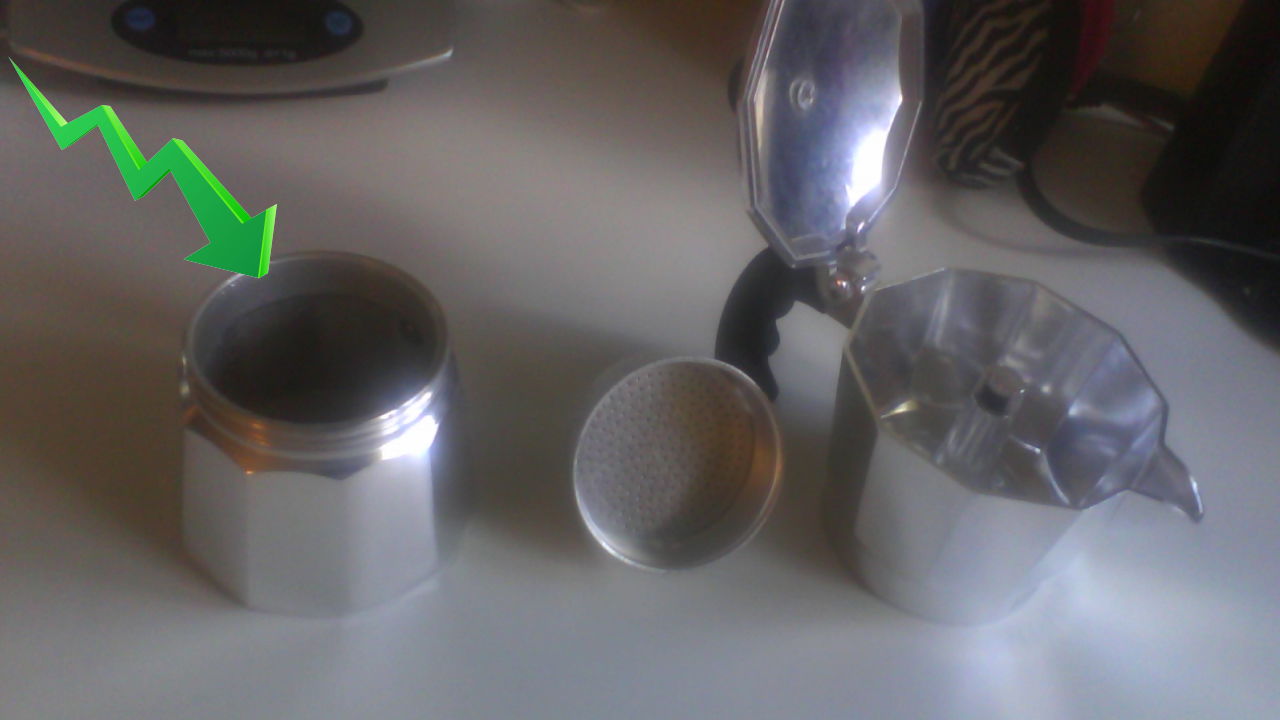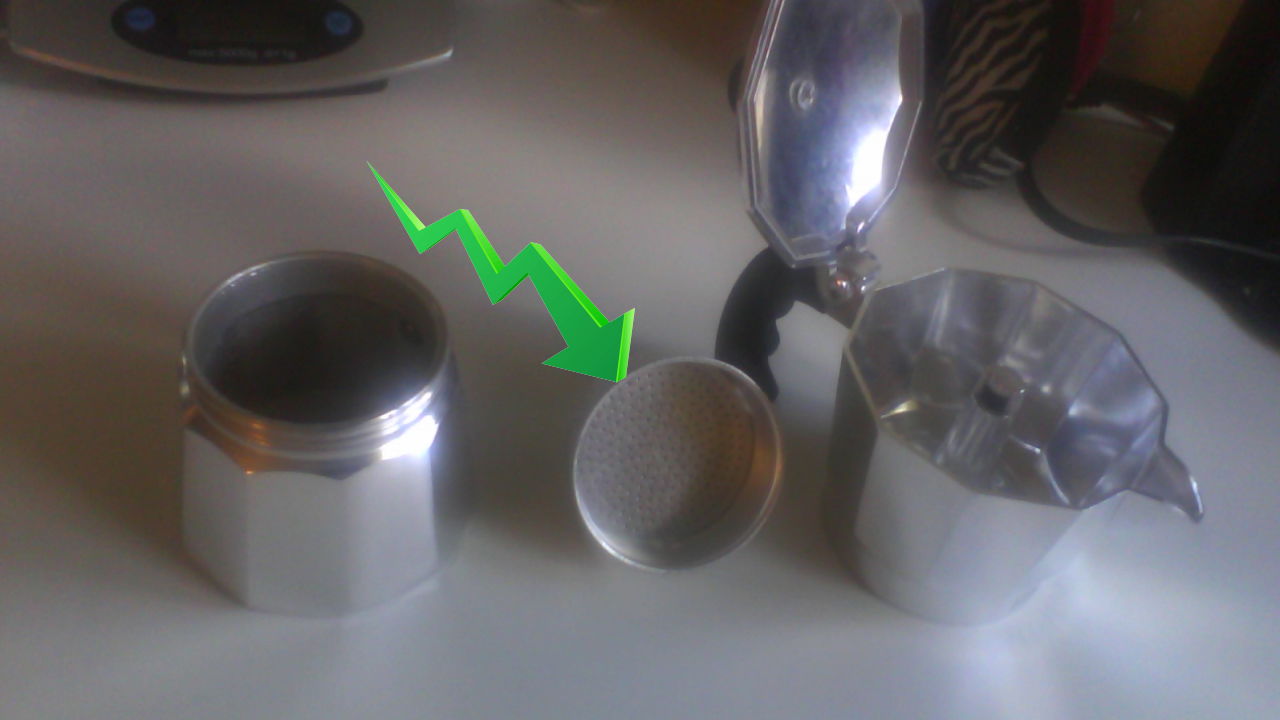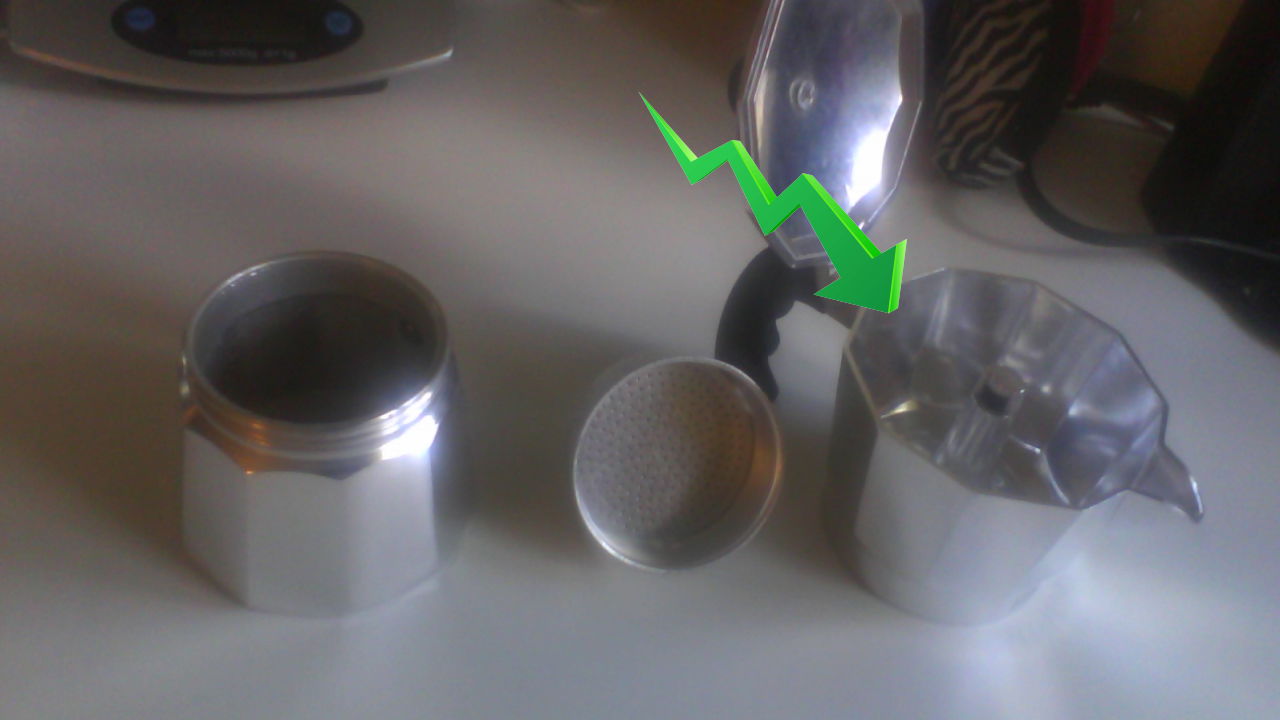Moka Pot Coffee
Invented in 1933 by Italian engineer Alfonso Bialetti, more information can be found on Wikipedia. The moka pot is very popular in Italy and Latin America.
A moka pot has 3 sections
 1. bottomThe bottom section holds the water for boiling.
1. bottomThe bottom section holds the water for boiling.
 2. middleCoffee is held in the funnel. Nearly boiling water is forced through the coffee, and the newly made beverage is pumped into the top.
2. middleCoffee is held in the funnel. Nearly boiling water is forced through the coffee, and the newly made beverage is pumped into the top. 3. topCoffee is collected in the top, from where it is poured out.
3. topCoffee is collected in the top, from where it is poured out.
How it works. Water is heated in the bottom section. As it starts to boil, it builds up steam pressure, which forces boiling water up through finely ground coffee. The finished coffee is collected in the top section, from which it is poured into a waiting cup.
Making coffee
1. The bottom reservoir is filled to just below the pressure release valve. If you’re a millimeter or two off either way, it’s not a big deal. Just get as close as you can.
2. Finely ground coffee is added to the funnel. How fine? I’m told it needs to be finer than drip grind, but not quite espresso. My own feeling is, the finer, the better. Use your own judgment. How much? I like to use 2 rounded teaspoons. If you have a steady hand, and can afford the additional coffee, add more. You can fill the funnel, but don’t go over.
2.5 THIS IS CRITICAL! Since the process needs steam pressure, NO grounds can be on the funnel’s rim. This will cause a pressure leak, and the whole process will fail.
3. Place on burner, on Medium, open the top, and wait. It should take about 10 minutes, maybe less. If the heat’s too low, the water won’t boil, and you won’t get the needed pressure. If it’s too high, it will boil too vigorously, sputter, and make a mess. Have a “practice run” or two.
4. When you start to see suds, you can turn the heat off (if you want). Residual heat should finish the brewing process.
5. Pour and prepare your coffee. It won’t look like enough. It didn’t to me. It is. If you use milk or cream, go by color, not volume. It’s much stronger, so you need more than you think.
6. Enjoy!



